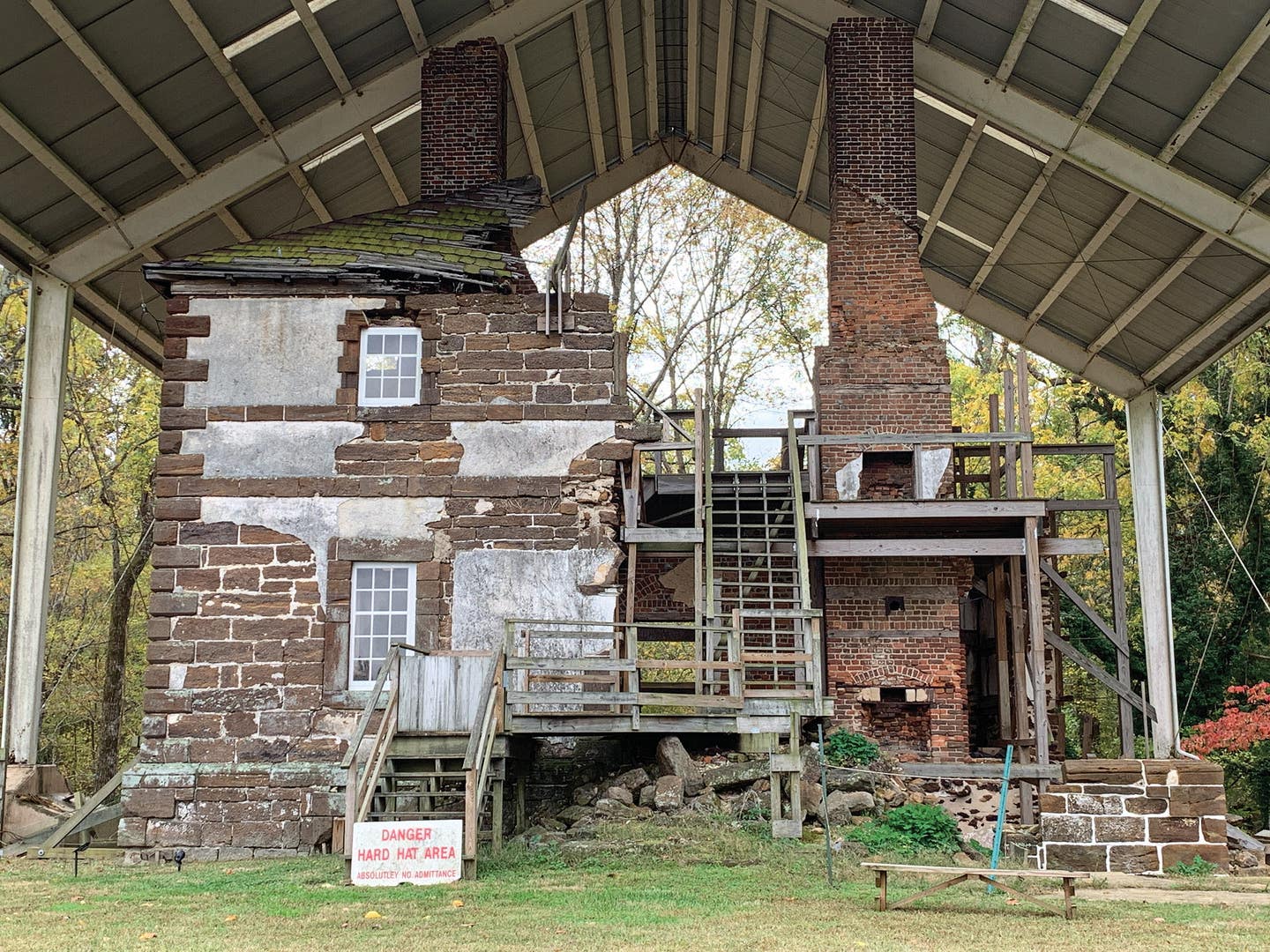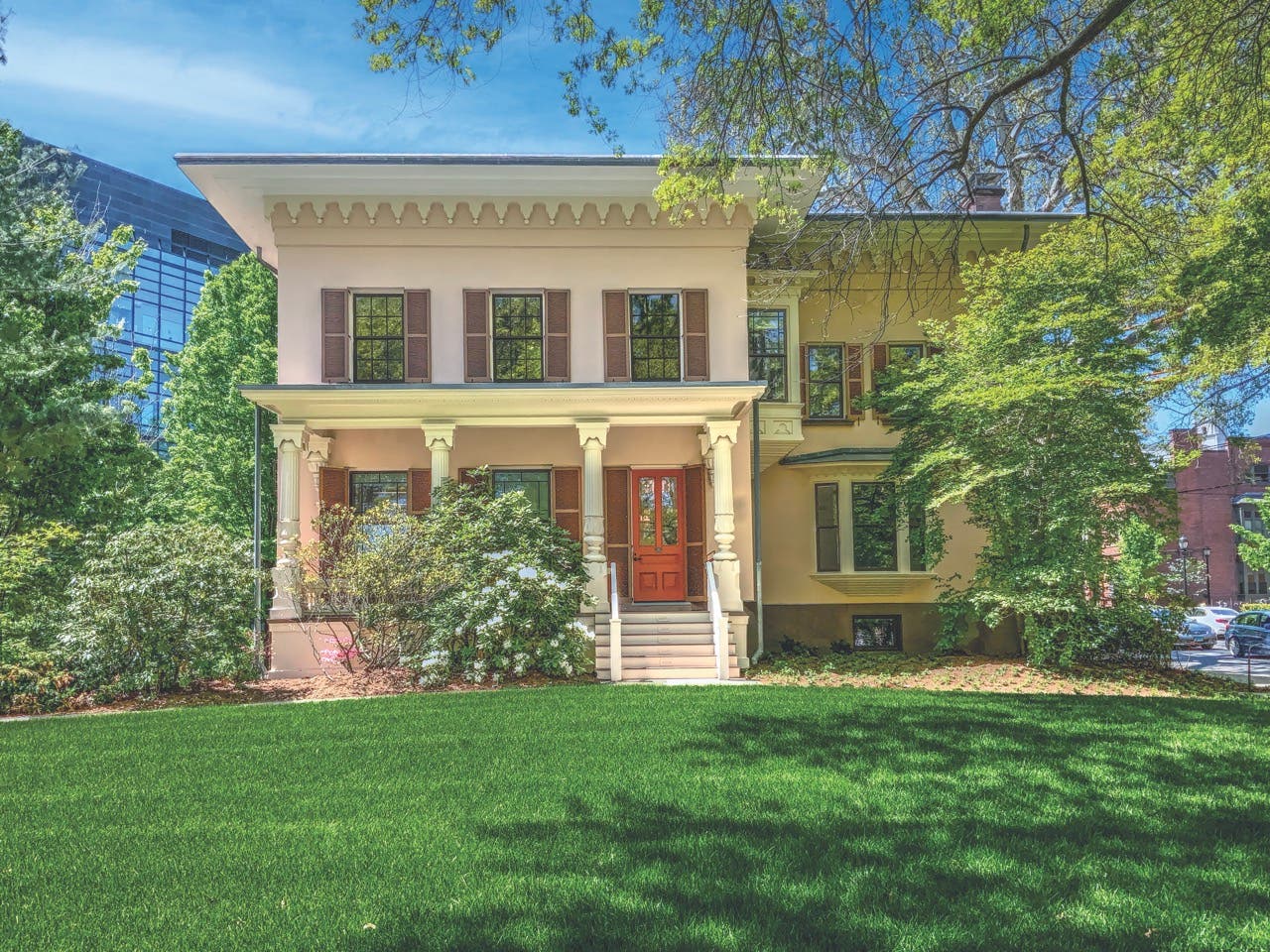
Product Reports
Mastering Masonry
Master stonecutter and architect Andrea Palladio encouraged us to build with “firmness, commodity, and delight” in mind. What is it about the enduring power of masonry that drives us to better understand its construction, materials, deterioration, and restoration?
For the past couple years, surveys returned from the Traditional Building Conference Series events (both in person and online) indicated a large interest in learning more about masonry topics. When the conference moves to Alexandria, Virginia, on April 7 and 8, 2020, it will continue its successful focus on materials and methods. However, there will also be masonry programs involving structural stabilization and cleaning, practical geometry, and the influence of Palladio on Mid-Atlantic building design and construction.
When you think about Virginia architecture, how many of you envision neoclassical designs rendered in brick? How many immediately think of Thomas Jefferson? Who thinks of Virginia’s proximity to Washington, D.C., and the capitol’s neoclassical buildings and monuments in marble, granite, and concrete? Here are some key points from the sessions that will take place this April at the historic Lyceum.
Lessons in Neoclassical Design: Firmness, Commodity, and Delight
Noted classicist, architect, designer, and educator Christine G.H. Franck will delve deeply into the Palladian legacy of architecture found in her native Virginia and surrounding states. The vocabulary of classical design endures because it functions well once built, the design elements support durability of materials, and its classical proportions and aesthetics delight the eye.
Lessons in Practical Geometry: Delight
Jane Griswold Radocchia, architect and architectural historian from Bennington, Vermont, will lead a session on the use of practical geometry to create buildings with balanced proportions. The “rule of thirds” found historically in building instruction will be one of the topics she covers. Radocchia notes, “This division of the rectangle into thirds is often found in pre-Industrial Revolution design. I do not think framers drew out the whole diagram on a sheathing board or a framing floor. Rather, because the diagram was common knowledge, they just drew the parts they needed.”
Lessons in Practical Masonry: Commodity
Architect David Bell assembled a team that included an engineer and craftsman to stabilize and interpret one of the nation’s few remaining ice wells in Alexandria, Virginia. Made of brick and located beneath the street outside Gadsby’s Tavern, the well was constructed in 1793 to store up to 62 tons of ice for the tavern and the town of Alexandria. Bell notes, “The integration of art, architecture, and craft, along with the collaboration of museum curator, architect, carver, stone mason, and metal and glass fabricators, was critical to the project. Blending in and standing out were balanced within the context of the 18th-century surroundings.” View more photographs at bellarchitects.com/portfolio/gadsby.
The Menokin Foundation in Warsaw, Virginia, has undertaken a $7 million project to stabilize and interpret one of America’s great Georgian-style houses, Menokin Hall. The house suffered serious losses but still retains over 80 percent of its historic fabric, and the foundation recognized that those losses revealed structural sections not normally visible. How could they interpret these views and provide for a safe visitor experience? Architecture firm Machado Silvetti, aided by an early construction drawing (1769) and photographs from the 1940s in the Historic American Buildings Survey (HABS), employed glass curtain wall construction for the missing areas, allowing visitors a rare glimpse at interior structures while retaining the adventurous feel of exploring a ruin.
Consigli Construction’s director of historic preservation, Bob Score, notes his company’s work on the project:
“Our team is leading an intensive pre-construction effort to investigate existing conditions and perform mockups and stability reviews for glass, masonry, steel, and wood connection points. During the stabilization, we will install Cintec anchors, stabilize two chimneys, and install steel to support the addition. The masonry will be painstakingly cataloged so that it can be accurately reconstructed. Once the structure is stable, we will integrate a modern curtain wall system to replicate the missing structural elements, including walls, floors, and the roof. M/E/P systems will be installed and the building will meet all current safety, building, and accessibility codes. Upon completion, the facility will serve as a museum and education center celebrating conservation and the heritage of our nation.”
Visit consigli.com/project/menokin-glass-project to learn more.
Lessons in Cleaning Masonry: Firmness, Commodity and Delight
Masonry is cleaned to protect it from deterioration and to revive a building’s color and architectural elements. The U.S. Capitol Complex includes some of America’s most important buildings and landscapes. The building exteriors are a veritable repository of the nation’s geological heritage, including marble from Georgia, Maryland, Massachusetts, New York, and Vermont; granite from across the country; regional sandstone; and Indiana Limestone. The range of stone types and physical conditions require various cleaning materials and methodologies. Mary Oehrlein, FAIA, LEED-AP, the director of historic preservation for the Architect of the Capitol, will review recent cleaning campaigns using water, chemicals, lasers, micro-abrasion, and poultice. This session is a rare opportunity to learn firsthand about different cleaning methods and their impact on masonry materials. aoc.gov/architecture
Lessons in Reconstructing Damaged Stonework: Firmness
In 2017, a weather event known as a micro-burst impacted the First Presbyterian Church of Oklahoma City, causing its beautiful west window to bow inwards 16 inches, cracking or fracturing every stone tracery unit. Three-dimensional scans were made of the damaged window to rebuild each piece using robotic milling, CNC routing, and the manual talents of stone masons. Once shipped to Oklahoma City, these units were carefully installed by a local masonry contractor, and the new stone tracery window is now fully assembled. Laurie Wells, vice president of sales and marketing for Old World Stone, will detail the careful reconstruction process now aided by scanning technology.
Architect and author Stephen Mouzon says that we should begin discussions about continuing our living traditions with the words “We do this because…” There are many ways to complete this sentence, concepts that further the journey of continuing education.
Judy L. Hayward spends her days pursuing a passion for historic architecture and the ways in which it can be reused to sustain and grow healthy communities. She develops courses in partnership with builders, architects, traditional craftspeople and others to teach both historic preservation and traditional building skills. She has one foot in the nonprofit world as executive director of Historic Windsor and the Preservation Education Institute and the other foot in the world of media and information services as education director for the Traditional Building Conference Series and Online Education Program.









